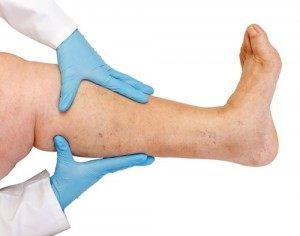News
Advances In Varicose Vein Treatment

 Do you have aching, painful or restless legs, heaviness, swollen ankles or muscle cramping? If so, you may have varicose vein disease. More than half of all women and about 45 percent of men will suffer from varicose vein disease in their lifetime. A family history and aging increase one’s tendency to develop varicose veins. Other factors include a sedentary lifestyle, weight gain, prolonged standing and pregnancy.
Do you have aching, painful or restless legs, heaviness, swollen ankles or muscle cramping? If so, you may have varicose vein disease. More than half of all women and about 45 percent of men will suffer from varicose vein disease in their lifetime. A family history and aging increase one’s tendency to develop varicose veins. Other factors include a sedentary lifestyle, weight gain, prolonged standing and pregnancy.
Varicose veins are usually a symptom of chronic venous insufficiency, a disease that causes blood to flow backward in the veins, making them bulge and twist down the leg. Venous insufficiency (also called venous reflux) can occur throughout the venous system, but occurs most frequently in the great saphenous vein, small saphenous vein, and other veins of the superficial venous system in the lower legs. Vein disorders are not always visible to the naked eye so the first step in treatment is to have an examination and diagnostic ultrasound vein mapping to determine the cause and severity of your vein problems.
The treatments to eliminate varicose veins and all vein abnormalities have improved dramatically in recent years. No longer do patients need to endure painful surgical vein stripping. State-of-the-art corrective thermal ablation treatments include endovenous laser treatment (EVLT), which is performed in the doctor’s office and does not require sedation or a hospital stay. Medical lasers have proven their safety and effectiveness in all kinds of medical procedures and offer far less chance of complications than traditional surgical approaches.
EVLT eliminates the abnormal saphenous vein, which is the source of most varicose vein issues. Using ultrasound technology, a thin laser fiber is guided into the vein through a very small opening in the skin to deliver light energy to the diseased vein wall, causing the vein to close and eliminating backward blood flow. The blood is automatically routed to other, healthy veins.
Some patients may experience temporary soreness, bruising, or swelling, which can be treated effectively with over-the-counter, non-aspirin pain relievers and typically subsides within the first 7-10 days. The procedure is minimally invasive and requires no general anesthesia. Only local anesthetic is used to numb the area where the physician is working. Patients are encouraged to wear compression stockings and walk immediately after the procedure. The vast majority of patients can resume normal activities the same day. Success rates of EVLT are reported as high as 98 percent, and is rapidly becoming the treatment of choice for most patients with saphenous related venous insufficiency.
